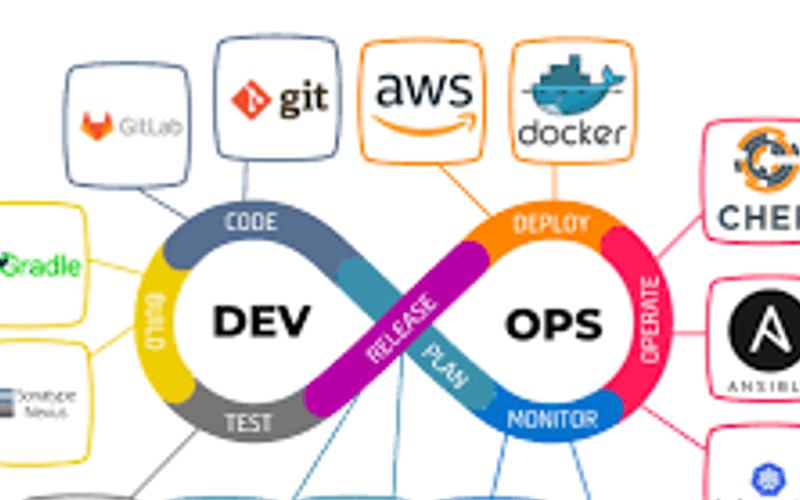1. What is DevOps?
DevOps is a cultural and technical movement that aims to bridge the gap between software development (Dev) and IT operations (Ops). By fostering a culture of collaboration and shared responsibility, DevOps seeks to improve the speed and quality of software delivery.
Key Goals of DevOps:
- Enhanced Collaboration: Breaking down silos between development and operations teams.
- Faster Delivery: Accelerating the release of new features and fixes.
- Improved Quality: Enhancing the reliability and performance of software.
- Automation: Automating repetitive tasks to reduce manual effort and errors.
2. Core Principles of DevOps
2.1 Collaboration and Communication
DevOps promotes a culture where development and operations teams work together throughout the entire software lifecycle. This collaboration helps to:
- Align Goals: Both teams understand and work towards shared objectives.
- Share Responsibilities: Developers and operations staff take joint ownership of application performance and stability.
2.2 Continuous Integration (CI)
Continuous Integration involves automatically building and testing code changes as they are committed to the version control system. This helps detect issues early and ensures that the codebase remains stable.
Benefits of CI:
- Early Bug Detection: Immediate feedback on code changes helps catch issues early.
- Faster Development: Automated testing speeds up the development process.
Example CI Workflow:
- Developers push code to a version control repository.
- The CI server automatically builds and tests the code.
- Results are reported back to the developers.
2.3 Continuous Delivery (CD)
Continuous Delivery extends CI by automating the deployment process. With CD, code changes are automatically deployed to staging or production environments, allowing for frequent releases.
Benefits of CD:
- Faster Releases: Automating deployments accelerates the release cycle.
- Reduced Risk: Small, incremental changes are less risky than large releases.
Example CD Workflow:
- The CI process completes successfully.
- The CD pipeline deploys the changes to a staging environment.
- After successful tests, changes are pushed to production.
2.4 Infrastructure as Code (IaC)
Infrastructure as Code involves managing and provisioning infrastructure through code rather than manual processes. This approach enhances consistency and reduces the risk of human error.
Benefits of IaC:
- Consistency: Ensures environments are reproducible and consistent.
- Automation: Automates infrastructure provisioning and management.
Example IaC Tools:
- Terraform: Manages infrastructure across various cloud providers.
- AWS CloudFormation: Defines AWS infrastructure as code.
2.5 Monitoring and Logging
Effective monitoring and logging are essential for maintaining application performance and identifying issues. DevOps emphasizes continuous monitoring to quickly detect and respond to problems.
Benefits of Monitoring and Logging:
- Proactive Issue Detection: Identify and address issues before they impact users.
- Performance Insights: Gain insights into application performance and usage.
Example Monitoring Tools:
- Prometheus: Monitors and alerts on system metrics.
- Grafana: Visualizes metrics from various sources.
3. DevOps Lifecycle
The DevOps lifecycle integrates the principles mentioned above into a cohesive workflow. Here’s an overview of the typical stages:
3.1 Plan
- Define project requirements and objectives.
- Plan features, releases, and infrastructure needs.
3.2 Develop
- Write and test code.
- Implement features and bug fixes.
3.3 Build
- Compile and build code.
- Create deployable artifacts.
3.4 Test
- Execute automated and manual tests.
- Ensure quality and stability.
3.5 Release
- Deploy code to staging or production environments.
- Verify deployment success.
3.6 Deploy
- Release code to end-users.
- Monitor deployment and gather feedback.
3.7 Operate
- Maintain and monitor the application in production.
- Ensure performance and reliability.
3.8 Monitor
- Continuously monitor application and infrastructure.
- Respond to issues and gather metrics for improvement.
4. Implementing DevOps
To successfully implement DevOps in your organization, consider the following steps:
4.1 Culture Shift
- Foster Collaboration: Encourage teamwork and shared responsibility.
- Embrace Change: Be open to evolving processes and practices.
4.2 Automation
- Adopt CI/CD: Implement continuous integration and delivery pipelines.
- Automate Testing: Use automated tests to ensure code quality.
4.3 Tools and Technologies
- Version Control: Use tools like Git for source code management.
- CI/CD Tools: Implement tools like Jenkins, GitLab CI, or CircleCI.
- IaC Tools: Utilize Terraform or CloudFormation for infrastructure management.
4.4 Continuous Improvement
- Collect Feedback: Gather feedback from all stakeholders.
- Iterate: Continuously refine processes based on feedback and metrics.
Conclusion
DevOps is more than just a set of practices; it’s a cultural shift that fosters collaboration, automation, and continuous improvement. By embracing DevOps principles, you can accelerate your development process, enhance software quality, and deliver greater value to your users.
Stay tuned for next week, where we’ll explore Infrastructure as Code with Terraform.
Source link
lol

